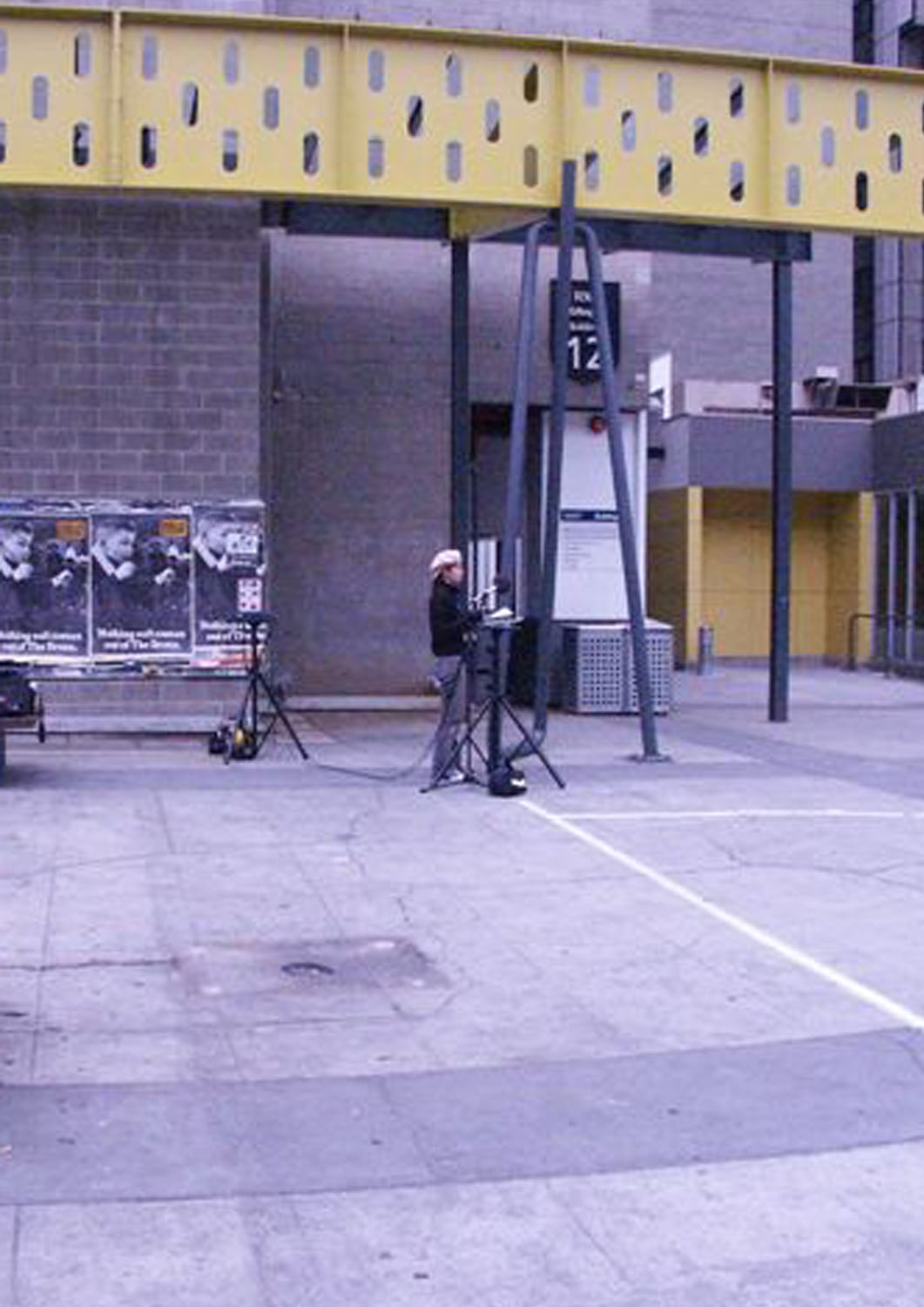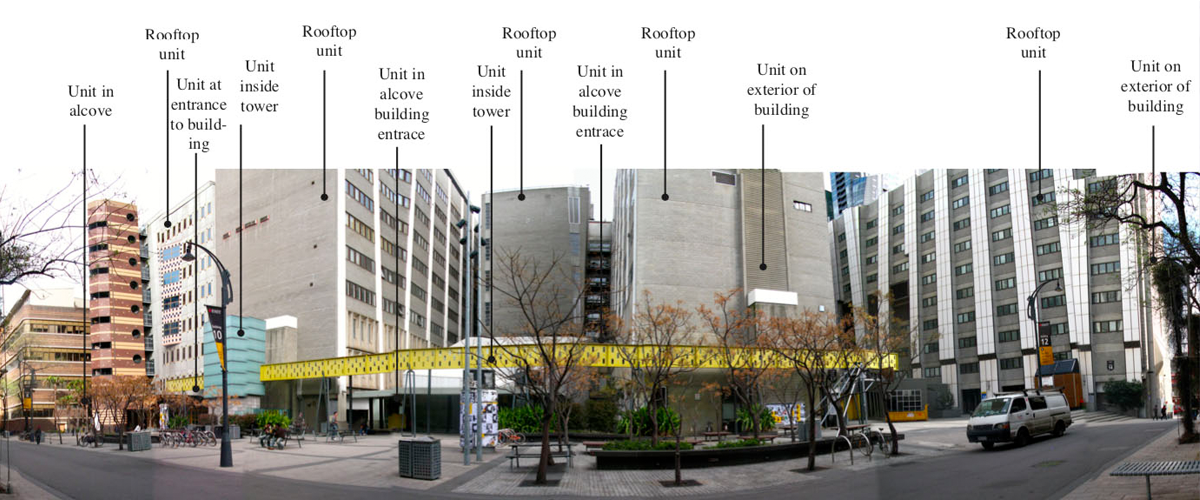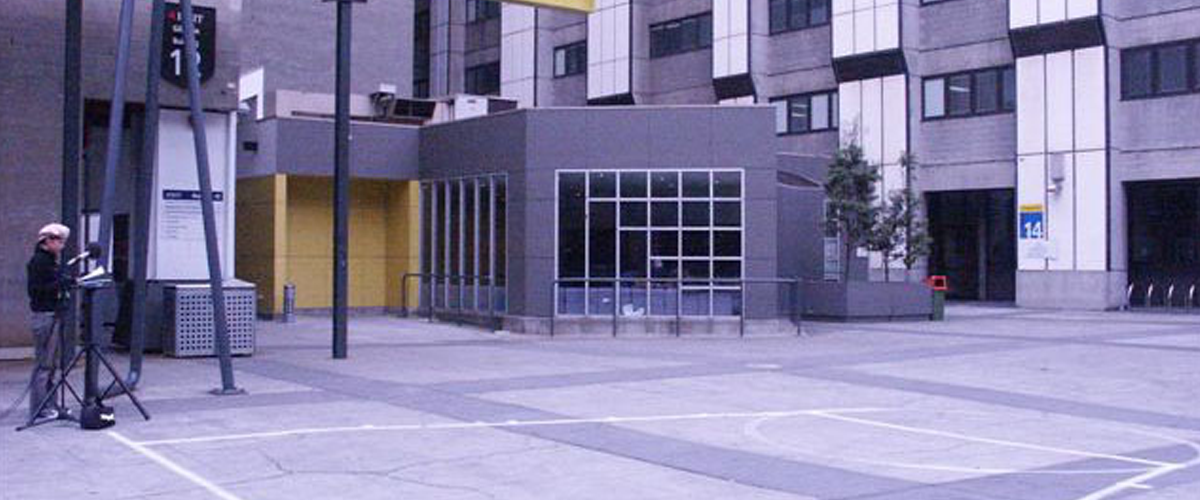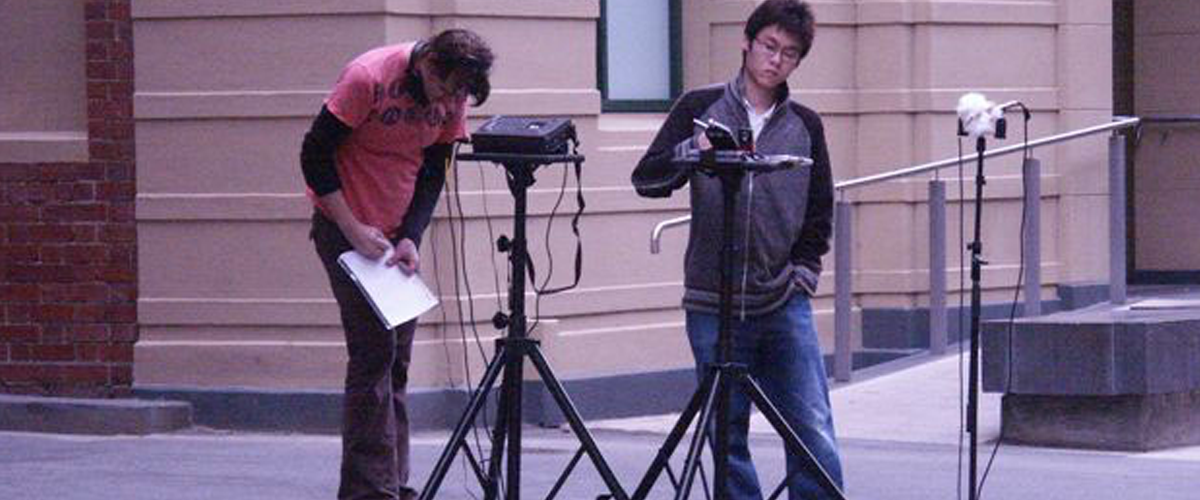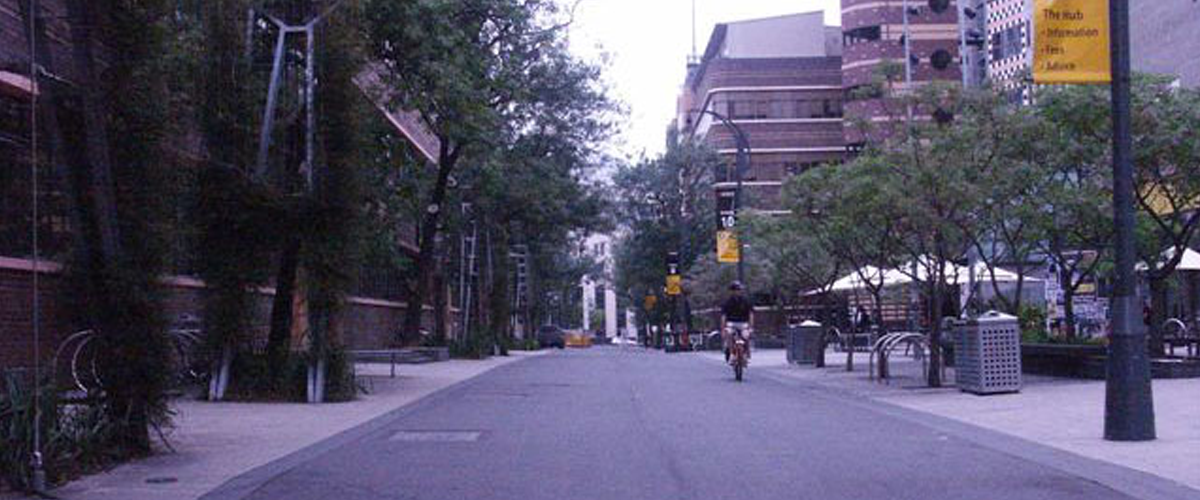A shutdown of city campus plant and equipment to expand the acoustic horizon
During the startup phase of the Studios, SIAL Sound Studios established the Soundscape Studies elective (still operating as at 2021). An aim of the elective was to develop an activist approach in students to sound in urban environments. Instead of just observing and analysing, we would design change, implement that change, and then observe the effects.
We started with Bowen St – a street running through the central RMIT campus.
On a Saturday morning we funded a Property Services consultant to shutdown as many plant and equipment units on Bowen St as possible. These included air-conditioning units and chemical extraction fans not in use. Server room cooling fans remained on.
While the db reduction was only small, the acoustic horizon expanded. Quick vox-pop questions to passers-by revealed listeners did perceive a change in the acoustic space.
An aspect of the urban environment most profoundly degraded by plant and equipment for building services and for transport has been the acoustic horizon, or limit of auditory spatial awareness. Perhaps the proliferation of spatial audio technologies into the home, cinemas, sound installations and vehicles is restorative.
In a natural environment, the acoustic horizon might be measured in kilometres. In urban environments, the constant hum collapses the acoustic horizon to just a few metres. The sense that one is embedded in an acoustic field, with the prospect of sharing a communal auditory experience is impossible.
The persistence of a single space filling, yet space collapsing sound, nullifies what should be a social space scanned by the ear and filled by the sounds of human agency such as voice and footsteps.
Such a scenario exists on the main campus of RMIT University, where the central zone of the city-based campus is surrounded by more than thirteen plant and equipment units for air-conditioning, fume extraction and server room cooling.

